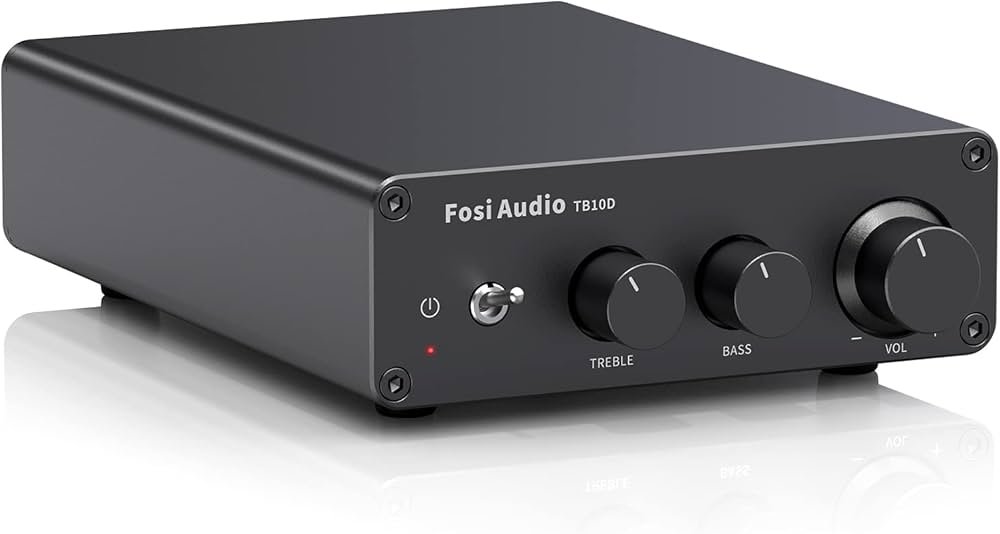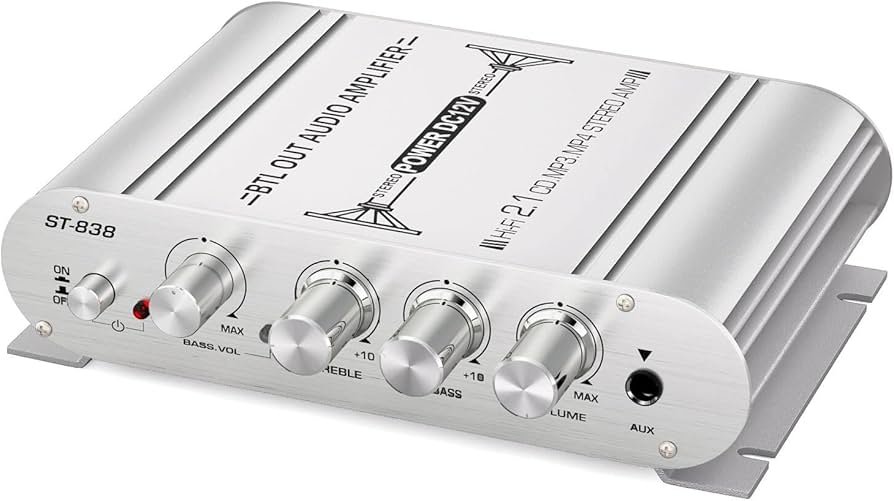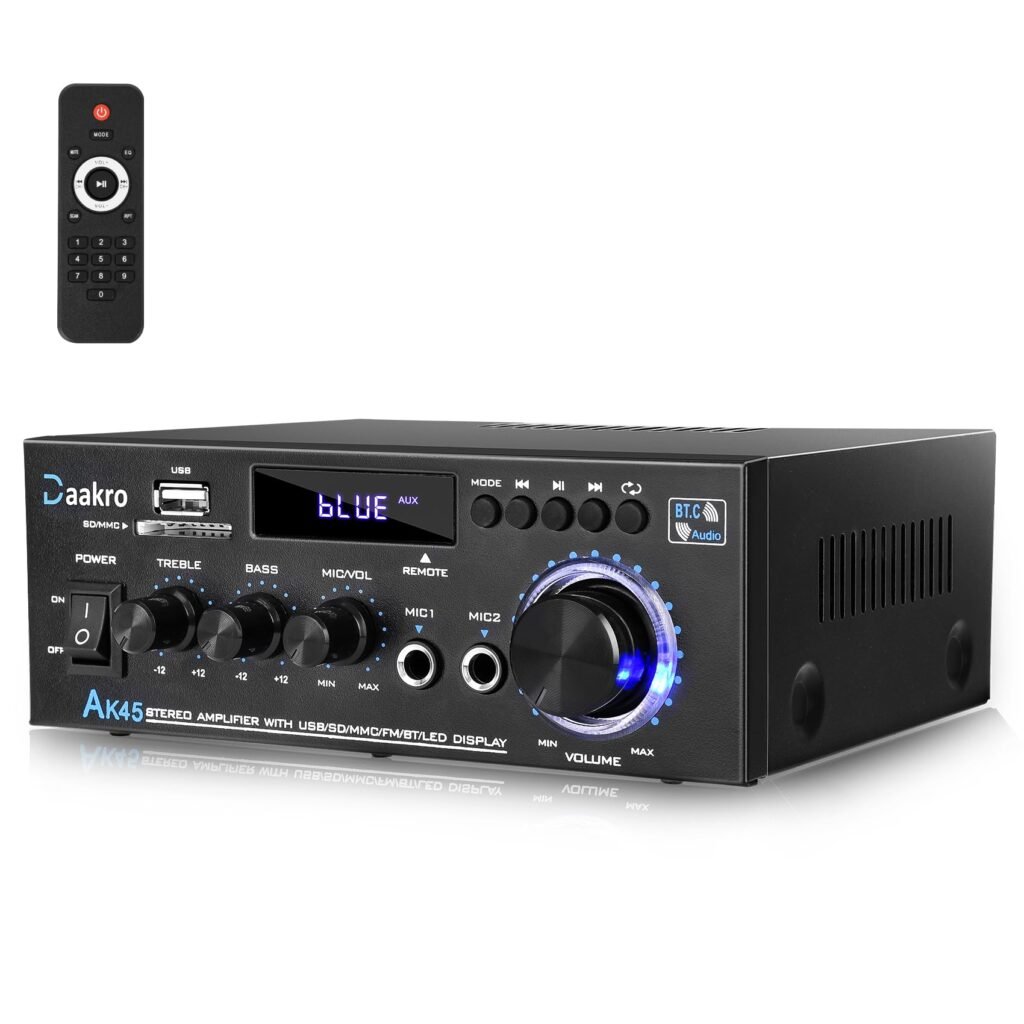Have you ever wondered how the music you enjoy every day gets transformed from a signal into sound?
What is an Audio Amplifier?
An audio amplifier is an essential device that enhances audio signals before they reach speakers or headphones. In simpler terms, it takes the weak electrical signals from devices like microphones or audio players and boosts them to a level that can drive speakers or headphones, allowing you to enjoy your favorite tunes at a comfortable volume without distortion. These amplifiers can be found in various settings, from homes to concert halls, making them a crucial component of both personal and professional audio systems.
Types of Audio Amplifiers
When talking about audio amplifiers, you’ll notice a diverse range of types, each designed for specific uses and applications. This variety can sometimes be overwhelming, but understanding the differences can help you make an informed decision. Here are the most common types:
1. Class A Amplifiers
Class A amplifiers are known for their excellent sound quality and minimal distortion. They operate without switching off, providing a constant flow of audio signals. However, they are less efficient and tend to generate a lot of heat. You’ll find these types of amplifiers primarily used in high-end audio systems.
Advantages
- Superior sound quality
- Low distortion levels
Disadvantages
- Lower efficiency
- Significant heat production
2. Class B Amplifiers
Class B amplifiers are a bit more efficient than Class A because they only amplify half of the audio signal waveform. This increased efficiency, however, may lead to distortion, particularly at lower volumes. While they are not as common as Class A, they still find their place in moderate-quality audio setups.
Advantages
- More energy-efficient than Class A
- Less heat production
Disadvantages
- Increased distortion
- Not ideal for low-volume playback
3. Class AB Amplifiers
Class AB is a combination of Class A and Class B features, offering a balance between sound quality and efficiency. They are quite popular in home audio systems and professional audio equipment due to their reduced distortion and moderate heat generation.
Advantages
- Good sound quality
- More efficient than Class A
Disadvantages
- Can still generate heat
- Slightly more complex circuitry
4. Class D Amplifiers
If energy efficiency is your priority, Class D amplifiers are the way to go. They use a different mechanism called pulse-width modulation to amplify audio signals, making them highly efficient and compact. However, some audiophiles argue that they do not provide the same sound quality as their Class A and AB counterparts.
Advantages
- Extremely energy-efficient
- Compact size
Disadvantages
- Potentially lower sound quality
- Can be more complex to produce
Choosing the Right Audio Amplifier
Selecting the right amplifier can significantly impact your listening experience. You want to ensure that your amplifier not only matches your speakers but also fits your personal sound preferences. Here are a few factors to consider:
1. Power Requirements
Different speakers come with various power requirements. Make sure you choose an amplifier that can deliver the appropriate wattage to your speakers, as underpowering them can lead to distortion and potential damage.
2. Impedance Matching
The impedance of your amplifier should match that of your speakers. A mismatch can result in inefficient power transfer and could even damage the amplifier or speakers over time.
| Impedance (Ohms) | Speaker Compatibility | Ideal Amplifier Range |
|---|---|---|
| 4 Ohms | Most home speakers | 50-200 Watts |
| 6 Ohms | Many bookshelf models | 30-150 Watts |
| 8 Ohms | Standard speakers | 20-100 Watts |
3. Sound Quality vs. Power
Consider where you’ll be using the amplifier. If sound quality is your primary concern—for instance, in a dedicated listening room—then you might lean towards Class A or AB amplifiers. If you’re looking for something portable that maintains decent sound quality, a Class D amplifier could be a better fit.

This image is property of Amazon.com.
Features of Audio Amplifiers
When shopping for an audio amplifier, you’ll come across various features that can enhance your listening experience. Here are some key features to keep in mind:
1. Built-in DACs
Digital-to-Analog Converters (DACs) can improve the quality of sound from digitally sourced music. If you’ll be streaming music from devices like laptops or smartphones, having a built-in DAC in your amplifier can be quite beneficial.
2. Multiple Inputs
Look for amplifiers that offer multiple input options, including USB, optical, Bluetooth, and traditional RCA inputs. This flexibility allows you to connect a variety of devices without hassle.
3. Remote Control
Having a remote control enhances your convenience, especially for larger audio systems. Being able to adjust volume or switch tracks from afar can make a big difference in your listening experience.
Benefits of Using an Audio Amplifier
Audio amplifiers provide a multitude of advantages beyond just amplifying sound. Here are a few benefits you might not have considered:
1. Improved Sound Quality
The main purpose of an audio amplifier is to enhance sound quality by providing a cleaner and clearer audio signal. This can lead to a more gratifying listening experience.
2. Enhanced Dynamics
With an amplifier, you can experience greater dynamic range, allowing you to hear subtleties in the music that you may have missed without it. This means deeper bass, clearer highs, and overall better sound performance.
3. Versatility
Many amplifiers are versatile enough to work well in various setups, from home theaters to professional music studios, making them an investment worth considering.

This image is property of Amazon.com.
Common Myths About Audio Amplifiers
There’s a lot of misinformation floating around about audio amplifiers that can lead to confusion. Here’s a couple of myths debunked for you:
Myth 1: More Watts Equals Better Sound
It’s a common misconception that a higher wattage always guarantees better sound quality. While higher power can lead to louder sound, it doesn’t necessarily equate to better sound. The quality of the amplifier and its design play more significant roles.
Myth 2: All Amplifiers Are the Same
Each type of amplifier comes with its own strengths and weaknesses. Choosing one should depend on your specific needs, whether that’s portability, sound quality, or power output.
Maintenance Tips for Your Audio Amplifier
To keep your audio amplifier in peak condition, follow these maintenance tips:
1. Regular Cleaning
Dust and debris can accumulate in and around your amplifier. Periodically clean the outside with a soft, dry cloth, and be sure to avoid using water or solvents that can damage the finish.
2. Proper Ventilation
Amplifiers generate heat, so make sure to place yours in a well-ventilated area. Avoid tight spaces where airflow is limited to prolong the lifespan of the equipment.
3. Check Connections
Regularly inspect and ensure that all cables and connections are secure. Loose connections can create noise or audio dropouts, greatly affecting your listening experience.

This image is property of Amazon.com.
Conclusion
Understanding audio amplifiers can greatly improve your listening experiences, whether you are enjoying a favorite playlist at home or attending a live concert. With the variety of options available, selecting the right amplifier isn’t just about boosting sound volume; it’s about finding the one that matches your audio requirements and preferences.
By considering power requirements, impedance compatibility, and the various features of different types of amplifiers, you can move closer to finding that perfect audio amplifier setup. Don’t let the myths deter you from making an informed choice, and remember that regular maintenance can extend the life of your equipment, allowing you to continue enjoying quality sound for many years to come.